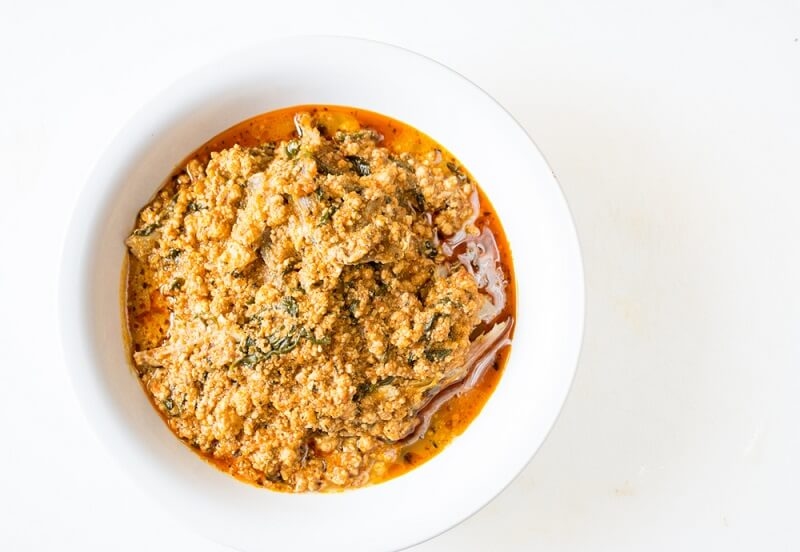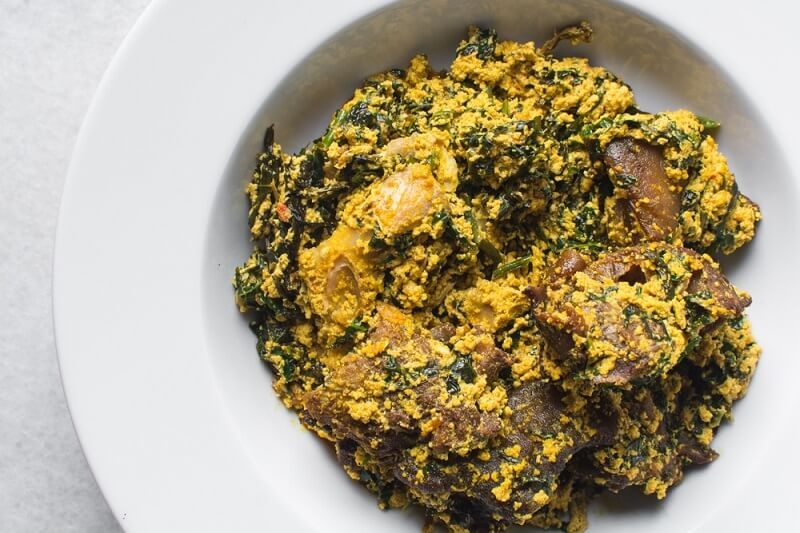
If you’ve ever been to a Nigerian gathering, chances are you’ve seen a big pot of egusi soup sitting proudly in the middle of the table. It’s thick, it’s rich, and let’s be honest—it’s usually the first thing people reach for. There’s something about the smell of roasted melon seeds mixing with palm oil, meat, and leafy greens that feels like home, even if you didn’t grow up eating it.
The beauty of egusi soup is that it’s simple at heart, but the flavor feels layered, deep, and honestly kind of addictive. One spoonful and you understand why it’s considered one of Nigeria’s treasures.
So, how do you make it? And how do you get it right without stressing over every detail? That’s what this guide is about. Let’s slow things down, talk through the steps, and make it approachable for anyone curious enough to give it a try.
At the core of the Nigerian Egusi Soup Recipe are melon seeds. They’re not pumpkin seeds, not sunflower seeds—these are specific to West Africa. When you grind them and cook them down, they create this nutty, almost creamy base that thickens the soup in a way that’s unlike anything else.
The usual suspects join in: palm oil for that golden-red glow, beef or goat for body, stockfish or crayfish for depth, and a good handful of greens toward the end. Put together, it’s less of a recipe and more of a rhythm: fry, stir, simmer, taste.
Every family has their way of doing it. Some add tomatoes, some don’t. Some cook the egusi paste until crumbly, others keep it smooth. What doesn’t change is the comfort it brings.
A quick rundown before we dive in:
Nothing fancy, nothing complicated. It’s the way you bring them together that makes the soup shine.
Here’s where most people get stuck: figuring out exactly how to cook egusi soup step by step without second-guessing themselves. Truth is, the process is straightforward once you try it.
That’s the framework. Once you’ve done it once or twice, you’ll never need to look at notes again.
For people outside Nigeria, egusi is sometimes called African melon seed soup. And while that’s true, it misses the point a little. It’s not just about the seeds—it’s about what they become when cooked with spice, heat, and care.
The seeds thicken the broth until it clings to whatever you scoop it with: fufu, pounded yam, even rice if that’s what’s in your pantry. It’s earthy, nutty, filling, and comforting all at once.

Egusi soup stands proudly among the best of Nigerian traditional dishes. Why? Because it works everywhere—family dinners, parties, weddings, Sunday after church. It’s versatile. It feeds a crowd. It’s easy to adapt depending on what protein or greens you have.
And beyond the practical side, it’s communal. Eating egusi is rarely a solo activity. Bowls of soup and big plates of fufu are meant to be shared, with conversation flowing as freely as the food.
Egusi doesn’t live alone. It’s part of a family of West African soups and stews that rely on rich bases, bold spices, and thick textures. Groundnut soup, ogbono soup, and light soups from Ghana and Sierra Leone all have their place. Egusi is special because of that nutty body the melon seeds give. It’s thicker than most, but still light enough to keep eating without feeling heavy.
It’s one of those dishes that can travel across borders and still hold its own.
One of the best parts of egusi is the protein. Goat meat adds depth, beef keeps it hearty, chicken lightens it up, and dried fish or stockfish layers in smokiness. Sometimes you see all of them together, and that’s when you know it’s a serious pot.
That combination makes it one of the best protein-rich African meals out there. With the soup plus a starch like yam or cassava, you’ve got everything—flavor, energy, and satisfaction.
A few things you learn after cooking egusi a few times:
Tiny tweaks, but they lift the soup from good to unforgettable.
Even if you didn’t grow up with egusi, it’s worth cooking. It’s not hard. It’s not expensive. And it gives you a taste of one of the most loved dishes in Nigeria. Once you taste that first spoonful, you’ll see why it’s been passed down through generations.
Cooking it at home is a way of bringing that tradition into your own kitchen. And honestly, it’s fun. You’ll spill a little oil, maybe make it too spicy the first time, but that’s part of the joy. Food like this isn’t about perfection—it’s about connection.
The Nigerian Egusi Soup Recipe isn’t just instructions on paper. It’s a living dish, rooted in culture, shared across tables, and loved by millions. Learning how to cook egusi soup step by step is just the beginning. Once you understand the role of melon seeds, why it’s called African melon seed soup, and how it sits alongside other Nigerian traditional dishes, you’ll appreciate why it’s so central to West African soups and stews.
At the end of the day, it’s also one of the most satisfying protein-rich African meals you can make.
So go on—grab some melon seeds, heat your palm oil, and let the aroma take over your kitchen. You’ll understand why egusi isn’t just food. It’s a piece of Nigerian identity in every spoonful.
This content was created by AI